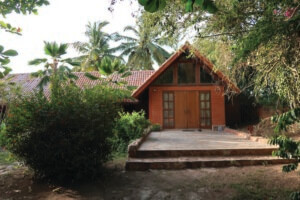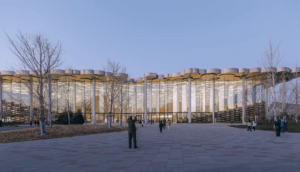Shenzhen is undertaking a massive public works project that will transform trash from one of China‘s largest cities into energy—and it’s going to be huge. The facility is planned to be a mile in circumference, making it the largest waste-to-energy power plant in the world.
Unlike its Danish counterpart by Bjarke Ingels, China’s circular waste facility won’t be puffing out delicate smoke rings representing CO2. Designed by another Danish firm, SHL Architects, the project is estimated to burn 5,500 tons of litter every day—more than Shenzhen produces daily.
While this may seem like a not-so-green solution, the alternatives, according to Fast Company, make it look comparatively greener.
The issue for China isn’t an environmental one—it’s about space. Last December, a landfill in Shenzhen amassed so much litter that it collapsed, killing 12 people in the process. This proposal reduces the amount of space needed to store trash, making more room for housing development.
Compared to a standard landfill, the waste-to-energy plant is significantly better for the environment. The former releases large quantities of potent greenhouse gases as rash decays and decomposes.
“Burning waste naturally creates pollutants, mainly carbon dioxide—something in the region of one metric ton of CO2 per metric ton of waste,” Architect Chris Hardie told Fast Company. “This does not sound great for sure, but when you compare it to putting the waste to landfill, one metric ton of waste will ultimately produce somewhere in the region of 60 cubic meters of methane as it decomposes—and this has more than twice the negative effect on global warming.”
The Shenzhen plant isn’t unique, either. China has 300 more litter-guzzling incinerators in the pipeline as it tries to prevent disasters like the one in Shenzhen last year and solve the country’s waste problem.
Like Ingels’s plan for a power plant, this one also offers an unexpected feature of human interaction. A pedestrian pathway, hugs the interior perimeter, winding its way around the mile-long circumference. The roof has been designed to include 473,600 square feet of solar panelling.










